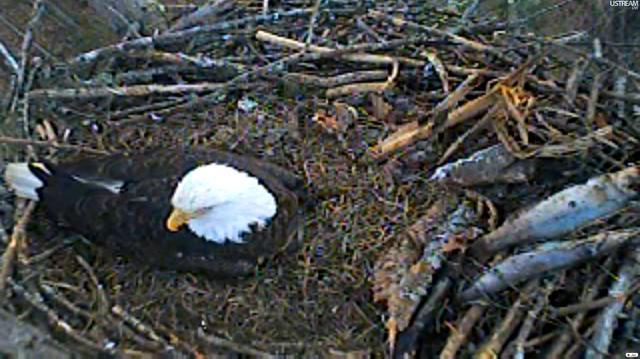In October 2010, a camera was set up at Jordan Lake that broadcast a nest of bald eagles. While it was taken down in the period after the eagles left, it was put back online just two weeks ago.
The idea started with Ted Simons, professor in the biology department, who for the past few years has taken his class out to the lake to see the bald eagles. Occasionally, he would visit the nest with his friend Francis Ferrell, biologist and member of the US Army Corps of Engineers.
“We were quite exited to be able to go twenty minutes from downtown and see an active nest, and when we were returning from the nest back in 2010, I said to Francis, ‘This would be really exciting for people in the Triangle who aren’t aware that bald eagles are nesting right in this area’,” Simons said.
The problem, however, was the remoteness of the nest’s location. They enlisted the help of engineer John Wettroth , managing director of Maxim Integrated Products, who designed a system that would allow the cameras to broadcast online.
“There is no power out there, so we basically had to put up solar cells and get batteries that could be charged and then put a camera way up in a tree above the nest, about sixty feet up. There are two of them actually, a spare. There’s a radio transmitter that transmits the signal back to a house, a person that volunteered…[and there was a] DSL line put into the house, and that is where it hooks up into the Internet,” Wettroth said.
The project also required the help of N.C . State students. As part of a networking class semester project, they helped get the lines across the lake set up. Additionally, they helped to set up the website.
“Basically, what the kids did was build the web page and write some of the software scripts that bring frames up and provide them to the users,” Wettroth said.
Ferrell also said the University’s computer science department helped out as well.
When the group started the project, they were unsure how well it would do, but just weeks after the camera went live in early 2011, they received millions of hits with thousands of viewers watching at a time from 36 different countries.
“After going all winter, the chicks hatched in early January and we kept the camera on until…they grew up and left the nest at the end of April…there was tremendous interest in the camera. We were really shocked by that,” Simons said.
The project also encourages viewers to participate, a method called citizen science. Ferrell set up a Facebook page where viewers can post their observations of the nest.
”The fact that there are thousands of people watching this nest continuously provides the opportunity to gather information that would be pretty difficult to do any other way,” Simons said.
Ferrell noted the new ability viewers have to chat with each other on the Ustream site where the feed was posted this year.
While the camera is back up now, Simons said due to a lack of time and funds, the project has been handed over to Ferrell and his science crew at the lake.
“We had a such a great following last year that we felt it was worthwhile to take on the project again. We felt that the project did a great job of making people in the Triangle aware that there are bald eagles nesting nearby, and we didn’t want people to lose that opportunity,” Ferrell said.
Despite the University handing control over to other biologists, all involved with the project hope to see it continue.








